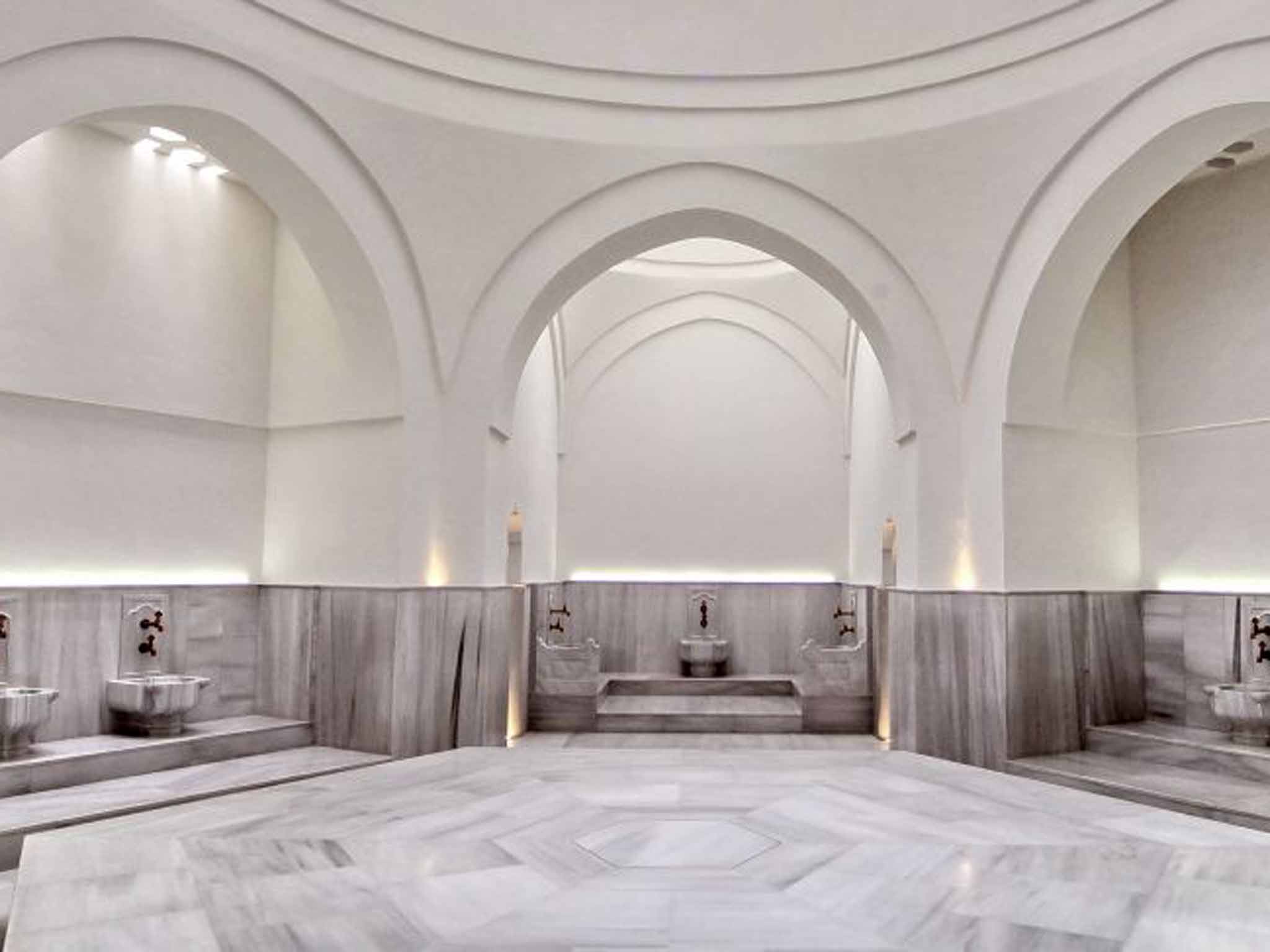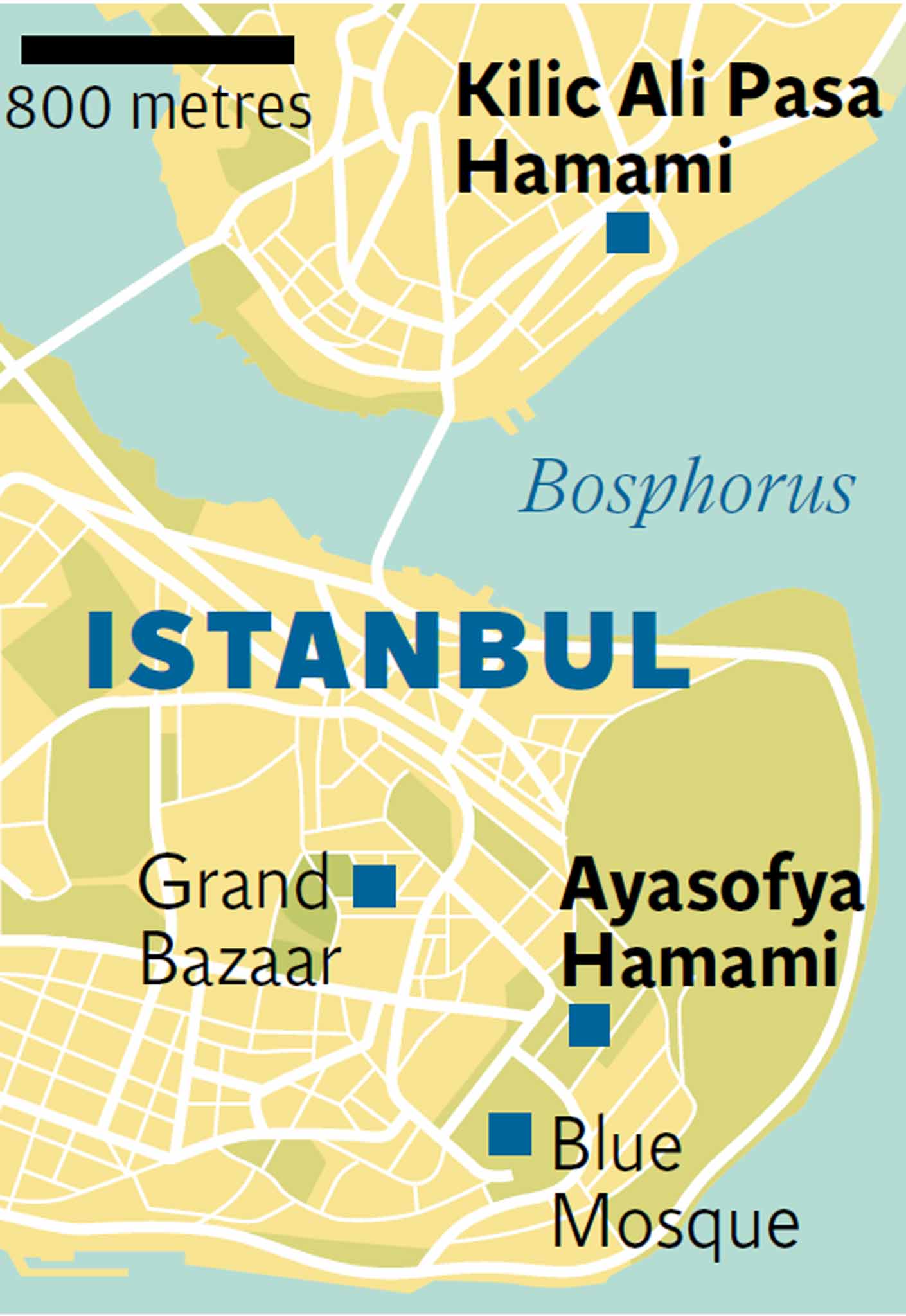Turkey's spa scene: Istanbul scrubs up well
Centuries-old hamams are being given a new lease on life, discovers Tristan Rutherford

Your support helps us to tell the story
From reproductive rights to climate change to Big Tech, The Independent is on the ground when the story is developing. Whether it's investigating the financials of Elon Musk's pro-Trump PAC or producing our latest documentary, 'The A Word', which shines a light on the American women fighting for reproductive rights, we know how important it is to parse out the facts from the messaging.
At such a critical moment in US history, we need reporters on the ground. Your donation allows us to keep sending journalists to speak to both sides of the story.
The Independent is trusted by Americans across the entire political spectrum. And unlike many other quality news outlets, we choose not to lock Americans out of our reporting and analysis with paywalls. We believe quality journalism should be available to everyone, paid for by those who can afford it.
Your support makes all the difference.We're in a steamy antechamber in the heart of historic Istanbul. My hamamci, Fatih, has unfolded me on to the searing gobek tasi marble slab that fills the centre of the steam room. This is no dainty tourist massage. I'm battered flat like a wiener schnitzel. Fatih uses his elbows and forearms to exorcise the ghosts of winter from within me.
The only respite from the marble furnace is when Fatih brings me a glass of iced mineral water. When he isn't looking, I dab some on my buttocks to ease the scald. I'm then lathered up like a soapsud snowman to scrub the toxins from my skin.
Despite appearances, this luxury bathhouse experience at the Ayasofya Hamami – opposite Istanbul's Aya Sofya Museum – has barely existed since the end of the days of the sultans a century ago. Like the English pub, the future of the Turkish hamam seemed bleak until recently. An entire generation of Turks preferred showers at home, and the idea of using a public bathhouse was deemed archaic. The Ayasofya Hamami was turned into a carpet showroom before being sympathetically renovated in 2008. Now, glass walkways display the original sit-in-a-row toilets and 15th-century furnaces. I'm part of a hamam revolution. And it feels hot.
The hamam's splendour becomes apparent as Fatih settles me on to a divan in the reclining room. I'm swaddled in no less than five fluffy towels. An attendant brings tea and a silver box of Turkish delight. I sigh as the stress eases in my shoulders. I feel like a sultan after a busy morning drinking sherbet and executing people, and I drift into an easy sleep.

The following day I ride the tram from the Aya Sofya in Sultanahmet to the historic suburb of Tophane. The five stops tease with vignettes of old Istanbul; the Orient Express terminus of Sirkeci, the sultans' once-private gardens at Gulhane, Bosphorus ferries at Eminonu. But as the tram doors open, a Black Sea wind inundates the carriage with its icy charge. It's like Lands End in a sou'wester and I need another steam.
Fortunately, the Kilic Ali Pasa Hamami in Tophane reopened in 2013 to offer a refined reinvention of the traditional Turkish bath. Over a glass of tea, sales manager Melike Safak explains how she attracts an equal number of tourists and Turks. "The public bathhouse concept was almost forgotten as habits changed," she explains. Her local clientele has been re-educated about the hamam's health benefits, which include "removing toxins from the skin and increasing circulation". Fun-loving Turks can also relive traditional treatments like the pre-marriage bridal bath, complete with "silver clogs, copper hamam bowls, flowers, candles, home-made fruit sherbets" and even a male minstrel who will sing to the group post-bathe.
Melike has also demystified the daunting hamam experience for foreigners by offering a short etiquette guide. Firstly, male nakedness is frowned upon. On entry to the Kilic Ali Pasa Hamami, visitors change into a wraparound towel. Secondly, like a municipal swimming bath, shouting, splashing and running are also frowned upon. Hamams are all about quiet contemplation, and you may relax for as long as you please.
Once togged up, my hamamci, Ahmed, meets me in the Kilic Ali Pasa Hamami's Rococo reclining hall. It has the ambience of a modern day spa: guests can sip pressed pomegranate juice pre-hamam, or leaf through Condé Nast Traveller after. In the fiery inner sanctum, I join a family of Turkish men who lay supine like hands of a clock on the circular gobek tasi (tummy stone) slab. The hamam's dome echoes with the chant of slaps, grunts, splashes and thumps. Twilight shimmers through the star-shaped windows.
Ahmed kills the romance by manhandling me on to a broiling marble bench. His scrub is searing. Wealds of black dirt are brushed from my skin into the drain. Ahmed declares that my body is "cok kirli", or "filthy". All is forgiven, though, as he cascades a waterfall of soapsuds over my body. The massage is harsh but fair. Particular attention is given to my shoulders, calves and fingers. "Stress, metro, laptop," he grumbles. After 30 minutes of massage I'm towelled off, mummified in blankets and left for dead with a glass of tea.

Paradoxically, since last September, wealthy Turks can scrub in 21st-century style. The brand-new Raffles spa has poached hamamci from Istanbul's best bathhouses. "Hamam jobs tend to be hereditary," says spa director Asli Sakizli, "so many of our staff carry skills directly from their mother or father." Raffles's vast bathing zone is also awash with contemporary accoutrements. Beside the sherbets and shelled pistachios are a detox juice bar and a mixed-sex hamam. "And all our products are organic, so you could literally eat them," says Sakizli.
My rub'n'scrub with hamamci Fatima is like entering a silken cocoon of champagne bubbles and lavender steam. Like a piece of steak I'm flipped six times on the baking gobek tasi. The penetrating heat, eerie sounds and elbow pressure dismiss me from consciousness. I come to as Fatima sloshes water over me. Winter is finally washed away.
Sakizli has been successful in attracting the very section of Turkish society that first eschewed the traditional bathhouse. "Once hamams were the place for matriarchs to interview potential daughters-in-law, to see if they were physically suitable for their sons," she explains. "But now hamams are the place to escape from electronic distractions or even family pressures."
And with that I nip back into the Raffles relaxation room for a kip and a cup of tea, where the 21st century just can't reach me.
Getting there
Turkish Airlines (0844 800 6666: turkishairlines.com) flies to Istanbul from Heathrow, Gatwick, Birmingham, Manchester and Edinburgh.
Visiting there
Ayasofya Hamami (ayasofyahamami.com). Pir-i-Pak ceremony, €85.
Kilic Ali Pasa Hamami (kilicalipasahamami.com). TL130 (£36) for a steam, scrub and massage.
Raffles spa (raffles.com/istanbul). Sessions from TL175 (£48).
More information
Join our commenting forum
Join thought-provoking conversations, follow other Independent readers and see their replies
Comments